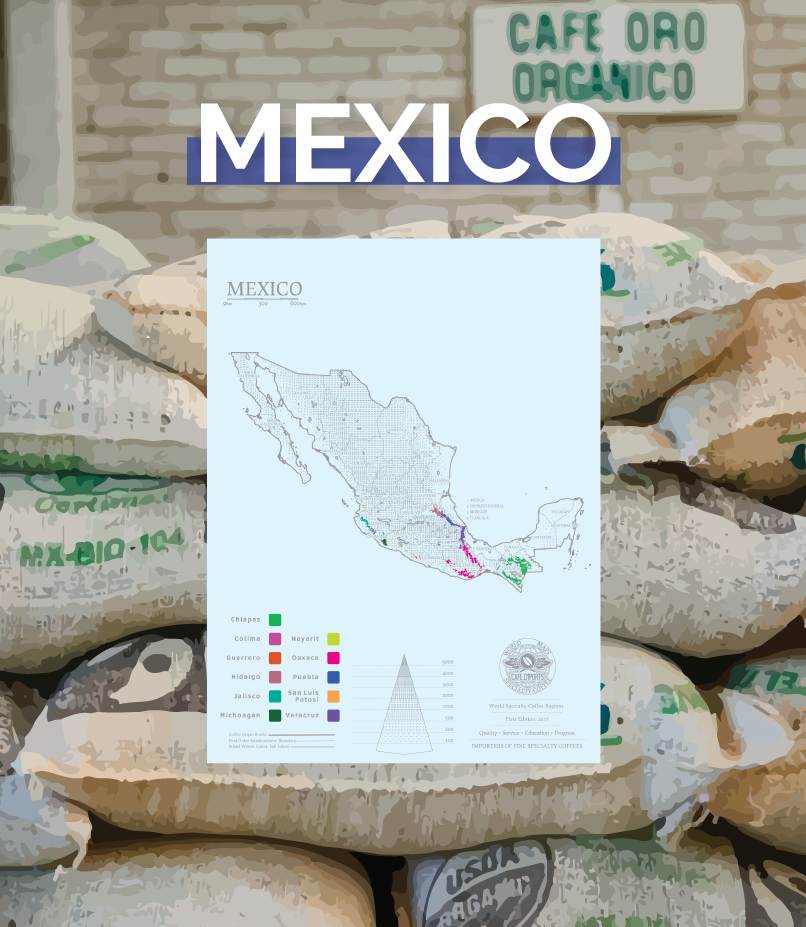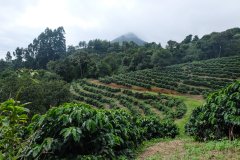Is Mexican decaf healthy? Decaffeinated? decaffeinated? Processing method of decaf coffee
Coffee is the world's most popular drink, consumed by more than 400 billion cups a year. It is part of a healthy, balanced diet, and the pleasurable experience of drinking coffee plays a key role in many cultures around the world, providing opportunities for friends, family and colleagues to interact.
But there are also some people who are unusually sensitive to caffeine intake, and the presence of decaf coffee is very important for these people.
For the first time, we should understand the following decaffeination process

Decaffeination removes almost all of the caffeine from coffee beans. It is done while the beans are still "green" and then baked. According to European law, decaffeinated coffee must contain 0.1% or less caffeine in roasted coffee beans and a maximum of 0.3% or less in soluble/instant coffee. Decaffeination occurs in food production facilities. The process includes:
· swell green coffee beans with water or steam to extract caffeine
· Extract caffeine from beans. This is done with water, solvent or activated carbon.
· Dry decaffeinated coffee beans to normal moisture levels.
In addition to water, solvents commonly used in decaffeination processes are ethyl acetate, methylene chloride (dichloromethane or DCM), or supercritical CO2. Although the manufacturing process may vary slightly from plant to plant, usually in the case of solvents, water or solvent circulates around the soaked beans, which can lead to caffeine release. The mixture is then drained from the extraction vessel and the process repeated several times until only traces of caffeine remain in the coffee beans. All processes are carefully controlled so that any possible solvent residues are below the strict limits set by law.
Caffeine Free Mexico SWP FTO, SWP is also committed to initiatives that help support sustainability and the livelihoods of producers around the world. Swiss Water Process (SWP) coffee contains no added chemicals and is processed using the cleanest possible water. SWP is also committed to initiatives that help support sustainability and the livelihoods of producers around the world. SWP processes work by diffusion rather than permeation. Initially, green coffee beans are soaked in water until all caffeine and flavor compounds are extracted. The beans are then discarded, and the solution they make is passed through a carbon filter to remove caffeine, leaving only flavor compounds-SWP calls them raw coffee extract, or GCE. When SWP decaffeinated, the coffee beans were steeped by a small amount of GCE, which produced a saturated solution in which the caffeine left, but the coffee's flavor compounds remained in place and unaffected. GCE is like yeast "mother". Although initially SWP had to sacrifice some coffee to make it, once the first batch was made, it only needed to keep the GCE healthy and regenerate it slowly, which it did by adding a small amount of clean water. After extracting caffeine from coffee beans, dry them to 10.2% moisture and prepare them for roasting.

Decaffeinated coffee generally contains similar amounts of antioxidants to regular coffee, although they may be 15 percent lower--a difference most likely due to a small loss of antioxidants during decaffeination.
Antioxidants are very effective at neutralizing reactive compounds called free radicals. These mainly include chlorogenic acid and other polyphenols. Age-related mental decline, reduced risk of type 2 diabetes all have positive effects
For people who are sensitive to caffeine, decaffeination may be the norm.
Important Notice :
前街咖啡 FrontStreet Coffee has moved to new addredd:
FrontStreet Coffee Address: 315,Donghua East Road,GuangZhou
Tel:020 38364473
- Prev

Mexican wet process coffee beans flavor characteristics Mexican coffee industry existing environmental problems
One of the driving forces of the economy in southeastern Mexico is agriculture. In Soconusco, Chiapas, coffee is one of the main agricultural products and is traded on international markets. Coffee grown in this area is wet-processed for commercialization as green coffee. Water is an essential resource in beneficio (coffee processing plant) and needs to be used in large quantities (Matuk et al., 1
- Next

Coffee pot in the world-the historical story of coffee bean cultivation in Brazil accounts for 1/3 of the world coffee bean output.
What do you think of when you hear about the South American country of Brazil? Some people will think of Carnival, its celebratory atmosphere, noisy fun and bright colors. Others think of the Amazon rainforest, which is 60% in Brazil. And I thought of coffee. As we all know, coffee is one of the most important industries in Brazil, which is why Brazil is called the world coffee pot.
Related
- Detailed explanation of Jadeite planting Land in Panamanian Jadeite Manor introduction to the grading system of Jadeite competitive bidding, Red bid, Green bid and Rose Summer
- Story of Coffee planting in Brenka region of Costa Rica Stonehenge Manor anaerobic heavy honey treatment of flavor mouth
- What's on the barrel of Blue Mountain Coffee beans?
- Can American coffee also pull flowers? How to use hot American style to pull out a good-looking pattern?
- Can you make a cold extract with coffee beans? What is the right proportion for cold-extracted coffee formula?
- Indonesian PWN Gold Mandrine Coffee Origin Features Flavor How to Chong? Mandolin coffee is American.
- A brief introduction to the flavor characteristics of Brazilian yellow bourbon coffee beans
- What is the effect of different water quality on the flavor of cold-extracted coffee? What kind of water is best for brewing coffee?
- Why do you think of Rose Summer whenever you mention Panamanian coffee?
- Introduction to the characteristics of authentic blue mountain coffee bean producing areas? What is the CIB Coffee Authority in Jamaica?

